Types of Breast Cancer
Breast cancer is classified by the type of tissue where the cancer cells initiate from.
Most common types
Ductal carcinoma in situ (DCIS)1,2
- About 1 in 5 new breast cancers are DCIS, which is an early stage of breast cancer
- Cancer cells remain only in the duct and have not yet spread to other tissues in the breast
- Nearly all women diagnosed at this early stage of breast cancer can be effectively cured
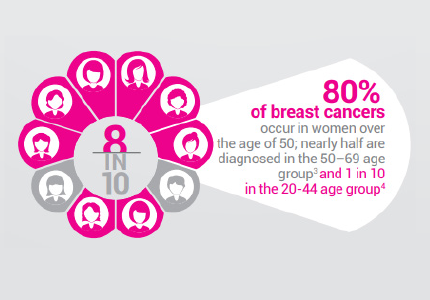
Invasive ductal carcinoma (IDC)1,3
- The most common type of breast cancer with about 8 of 10 invasive breast cancers being IDC
- Cancer cells have started in the lining of the duct that carries milk to the nipple but have grown outside the duct into the fatty tissue of the breast
- These cells can also spread to other parts of the body through the lymphatic system and bloodstream
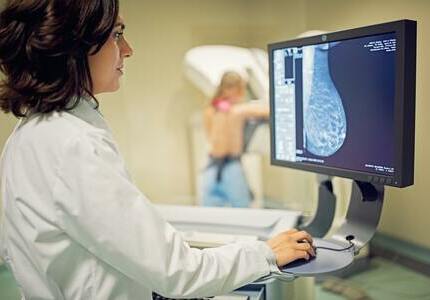
Invasive (or infiltrating) lobular carcinoma (ILC)1,4
- The second most common type of breast cancer after IDC
- About 10% of all invasive breast cancers are ILC
- Cancer cells have started in the lobules (the milk-producing glands) but have invaded the surrounding breast tissues
- With time, these invasive cells can spread to other areas of the body
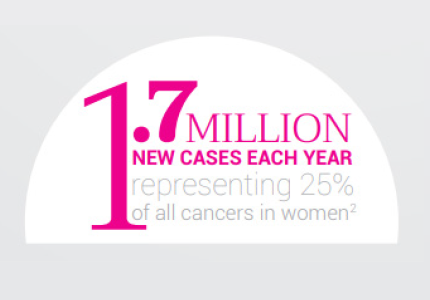
Less common types
Lobular carcinoma in situ (LCIS)1,5
- A relatively uncommon condition arising from abnormal cells in the lobules (the milk-producing glands at the end of breast ducts)
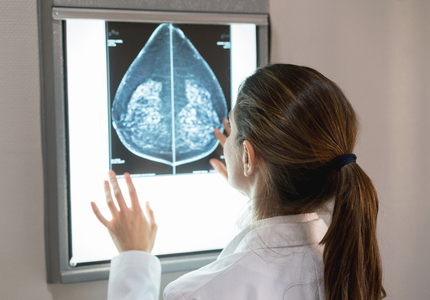
lnflammatory breast cancer (IBC)1,6
- Accounts for about 1% to 5% of all breast cancers
- IBC can give the skin on the breast a red appearance and make it feel warm, as well as a thick appearance that may resemble an orange peel
- As there is usually not a single lump or tumour, it is sometimes mistaken for mastitis, or an infection in the breast

Paget’s disease of the nipple1,7
- A rare cancer, accounting for only about 1% to 4% of all cases of breast cancer
- The disease starts in the breast ducts and spreads to the nipple
- Often seen as crusted, scaly and red skin around the nipple, with areas of bleeding or oozing. Almost always associated with either DCIS or IDC
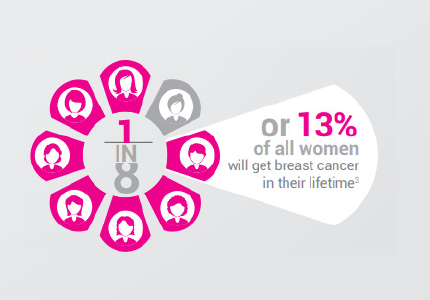
Phyllodes tumour1,8
- A very rare breast tumour that develops in the connective tissue of the breast
- Phyllodes tumours are usually benign
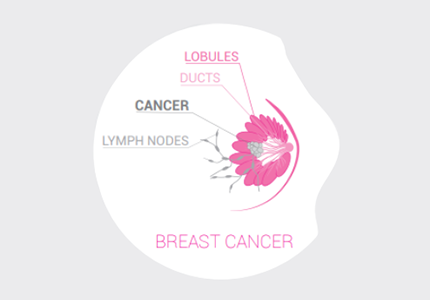
Grouping the stages of breast cancer
Physicians group the different stages of breast cancer in the following ways, based on a breast cancer classification system maintained by the American Joint Committee on Cancer (AJCC).9
Early stage breast cancer9,10
The tumour in the breast is smaller than 5 cm and the cancer has not spread to more than 3 lymph nodes.
Early stage breast cancer regroups stages IA, IB and IIA.
Locally advanced breast cancer9,10
Tumours can vary in size but are generally larger than those present in early stage breast cancer. Likewise, lymph node spread is generally more extensive than in early stage breast cancer.
Locally advanced breast cancer regroups stages IIB, IIIA, IIIB and IIIC.
Metastatic breast cancer9,10
The cancer has spread to other parts of the body and is considered stage IV breast cancer.
References
- http://www.breastcancer.org/symptoms/types [Last accessed Nov 2016].
- https://www.cancer.org/cancer/breast-cancer/understanding-a-breast-cancer-diagnosis/types-of-breast-cancer/dcis.html [Last accessed June 2017].
- https://www.cancer.org/cancer/breast-cancer/understanding-a-breast-cancer-diagnosis/types-of-breast-cancer-invasive-breast-cancer.html [Last accessed June 2017].
- http://www.breastcancer.org/symptoms/types/ilc [Last accessed June 2017].
- http://www.breastcancer.org/symptoms/types/lcis [Last accessed June 2017].
- https://www.cancer.gov/types/breast/ibc-fact-sheet [Last accessed June 2017].
- https://www.cancer.gov/types/breast/pagetbreastfactsheet [Last accessed June 2017].
- https://www.cancer.org/cancer/breast-cancer/non-cancerous-breast-conditions/phyllodes-tumors-of-the-breast.html [Last accessed June 2017].
- AJCC Cancer Staging Manual, Eight Edition © The American College of Surgeons (ACS), Chicago, Illinois.
- https://ww5.komen.org/BreastCancer/StagingofBreastCancer.html [Last accessed January 2018].
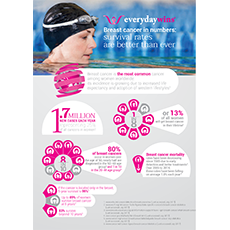
INFOGRAPHIC
PDF - 601 Kb



